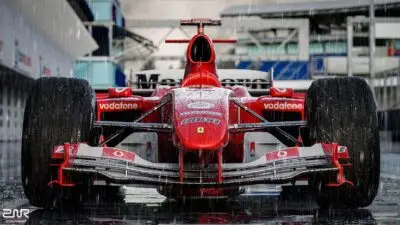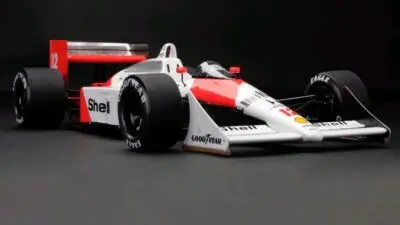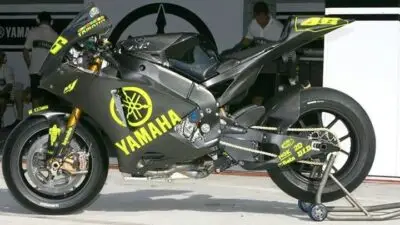WeatherTech Raceway Laguna Seca stands as one of America’s most challenging and iconic racing circuits, carved into the rolling hills of California’s Monterey Peninsula. Since opening in 1957, this legendary track has tested the skills of professional drivers and weekend warriors alike with its demanding layout and dramatic elevation changes.

The track’s most famous feature, the Corkscrew turn combination, creates a heart-stopping five-and-a-half-story drop that makes Laguna Seca one of the most recognizable corners in all of motorsports. This blind downhill sequence separates skilled drivers from the rest, demanding precise timing and nerves of steel to navigate successfully.
From understanding the track’s rich racing heritage to mastering its technical sections, drivers who conquer Laguna Seca join an elite group who have tamed one of racing’s ultimate challenges. The circuit continues to host world-class events while offering driving experiences that allow enthusiasts to tackle the same corners where legends have made their mark.
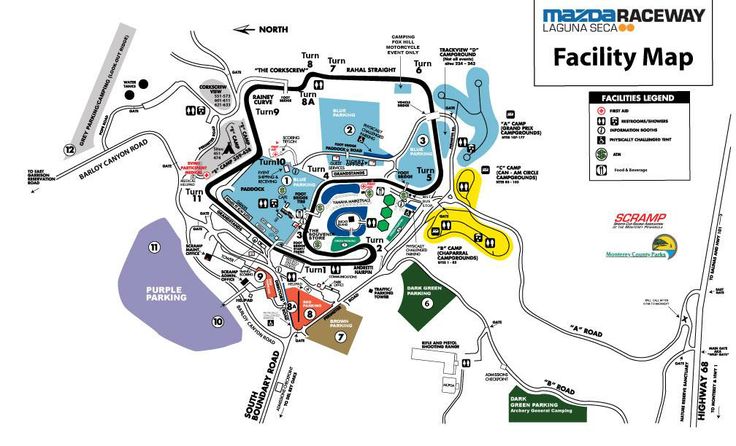
Key Takeaways
- Laguna Seca opened in 1957 and has become one of America’s most prestigious racing venues with dramatic elevation changes
- The Corkscrew turn features a dramatic five-story drop that creates one of motorsport’s most challenging and iconic corner combinations
- The track hosts major racing events and offers driving experiences for enthusiasts to experience this legendary circuit firsthand
Overview of Racing at Laguna Seca
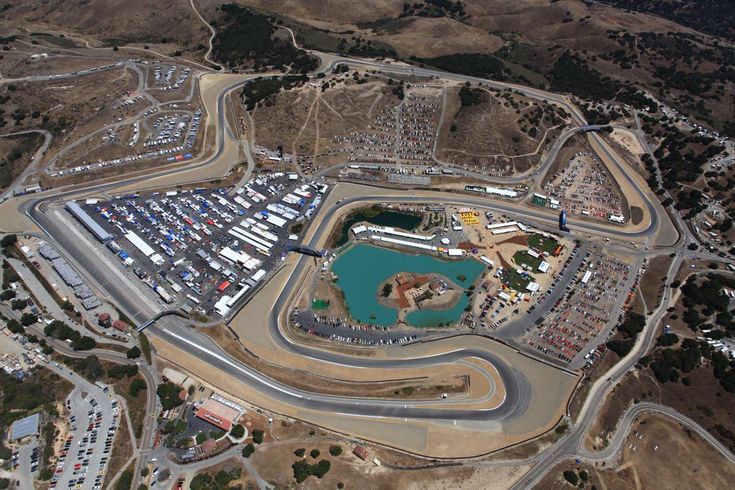
WeatherTech Raceway Laguna Seca stands as one of America’s most challenging and recognizable racing circuits, featuring dramatic elevation changes and the world-famous Corkscrew turn. The track hosts premier racing series including IndyCar and MotoGP while maintaining its reputation as a cornerstone of American motorsport culture.
Unique Features of the Circuit
The 2.238-mile circuit features considerable elevation changes that challenge drivers at every skill level. Located on California’s Monterey Peninsula, the track winds through hillsides creating a unique racing experience.
The Corkscrew remains the circuit’s signature feature. This dramatic left-right chicane includes a blind crest followed by a 59-foot drop in elevation. The turn sequence drops drivers over 10 stories from turns 8 to 9.
The track’s layout includes several other notable corners:
- Rainey Curve – A high-speed sweeping turn
- Andretti Hairpin – A tight, technical corner requiring precise braking
- Turn 2 – An uphill right-hander that tests acceleration
In 1988, track modifications added an infield section at Turns 3 and 4 to meet FIM minimum length requirements for motorcycle racing. This change enhanced the circuit’s technical complexity.
Significance in American Motorsport
Laguna Seca opened in 1957 at a cost of $1.5 million raised from local businesses and individuals. The facility was built on part of the US Army’s Fort Ord after the dangerous Pebble Beach Road Races were abandoned.
The track quickly became a cornerstone of American motorsport culture. Its challenging layout and scenic setting attracted both professional drivers and racing enthusiasts from around the world.
WeatherTech Raceway Laguna Seca earned recognition as one of America’s best racing circuits. The combination of technical corners, elevation changes, and high-speed sections creates a complete test of driving skill.
Professional drivers consider the circuit a true benchmark. The track’s demanding nature separates skilled drivers from average ones, making victories here particularly meaningful in racing careers.
Types of Races Hosted
IndyCar Series represents one of the track’s premier racing events. The open-wheel cars navigate the circuit’s elevation changes and tight corners, creating spectacular racing action for fans.
MotoGP motorcycle racing showcases another major championship at the facility. The track’s technical layout provides excellent motorcycle racing with multiple overtaking opportunities.
Sports Car Racing includes various professional and amateur series throughout the racing season. These events feature different vehicle classes competing on the same weekend.
The track also hosts:
- Club Racing Events for amateur drivers
- Track Day Experiences for enthusiasts
- Driving Schools and instruction programs
- Corporate Events and private rentals
WeatherTech Raceway Laguna Seca serves as both a professional racing venue and a destination for racing fans and families. The facility’s diverse event calendar ensures year-round motorsport activity on the historic circuit.
History and Evolution of Laguna Seca

Laguna Seca began as a response to safety concerns in 1957 and grew into one of America’s premier racing venues through decades of modifications and ownership changes. The track underwent major layout changes in 1988 and transitioned through multiple naming partnerships before becoming WeatherTech Raceway Laguna Seca.
Origins and Early Years
The origins of Laguna Seca Raceway stem from a tragic event – the death of racer Ernie McAfee in 1956 during the Pebble Beach Road Races. This accident highlighted the need for a safer, permanent racing facility.
The Sports Car Racing Association of the Monterey Peninsula (SCRAMP) formed to address this safety issue. They built the track in 1957 near both Salinas and Monterey, California.
The track transitioned from the Pebble Beach Road Races in fall 1957 to the West Coast Professional Races in 1958. These early years established Laguna Seca as a West Coast racing destination.
Racing quickly expanded beyond cars to include motorcycles. The facility became known for hosting diverse racing series and attracting both professional and amateur competitors.
Major Milestones and Modifications
Laguna Seca underwent significant changes to meet growing racing demands. In 1988, the track layout was modified to add an infield section at Turns 3 and 4 to meet FIM minimum length requirements for motorcycle racing.
The track evolved to host major racing series including:
- Can AM
- Trans Am
- Formula 5000
- IMSA
- Indy Cars
- MotoGP
The famous Corkscrew became the track’s signature feature. Turn 8, known worldwide as “The Corkscrew,” includes a blind crest followed by a dramatic 59-foot drop in elevation.
SCRAMP continued operating the facility as a non-profit organization. This structure allowed reinvestment in track improvements and safety upgrades over the decades.
Transition to WeatherTech Raceway Laguna Seca
The track underwent several naming changes through corporate partnerships. It became known as Mazda Raceway Laguna Seca during the Mazda sponsorship period.
The facility operated as Mazda Raceway Laguna Seca while hosting five world-class race weekends each season. SCRAMP maintained its non-profit management structure during this era.
The most recent transition brought the WeatherTech naming rights partnership. The track is now branded as WeatherTech Raceway Laguna Seca while maintaining its core identity and operations.
The 11-turn, 2.238-mile road course continues operating under SCRAMP management. The naming partnership provides funding while preserving the track’s racing heritage and community connections.
The Corkscrew: Laguna Seca’s Defining Corner

The Corkscrew stands as one of the most iconic corners in the world, featuring a dramatic elevation drop and challenging left-right combination. This legendary corner has produced countless memorable racing moments and continues to test drivers’ skills and courage.
Track Layout and Location of the Corkscrew
The Corkscrew occupies turns 8 and 8A on the 11-turn Laguna Seca circuit. It sits at the end of the Rahal Straight, where drivers approach at high speeds before encountering the corner’s unique challenges.
The corner begins as a left-hand turn that quickly transitions into a right-hand bend. This creates a complex chicane that demands precise timing and positioning.
Drivers must navigate this sequence while dealing with limited visibility. The corner’s blind crest makes it impossible to see the exit until committing to the turn.
The layout forces racers to brake hard while turning. This combination of heavy braking and direction changes makes the Corkscrew one of motorsport’s most demanding corners.
Elevation Change and Technical Challenges
The Corkscrew features a dramatic drop in elevation that sets it apart from other racing corners. Sources describe the drop as ranging from three stories to eight stories in height.
The elevation change creates unique technical challenges for drivers. Cars experience significant weight transfer as they plunge downward through the corner sequence.
Braking becomes extremely difficult due to the steep descent. Drivers must carefully modulate their brake pressure to avoid losing control on the downhill slope.
The elevation drop also affects car setup and suspension. Teams must balance their vehicles to handle both the flat sections of the track and the Corkscrew’s extreme gradient.
Legendary Passes and Iconic Moments
The Corkscrew has produced some of motorsport’s most memorable overtaking maneuvers. The corner’s unique characteristics create opportunities for brave drivers to attempt spectacular passes.
Alex Zanardi’s famous pass around the outside of the Corkscrew remains one of racing’s greatest moments. This move demonstrated the corner’s potential for dramatic racing action.
The corner’s blind entry and elevation change make passing attempts extremely risky. Drivers must commit to their moves without seeing the full corner exit.
Many racing series have featured memorable Corkscrew battles. The corner continues to generate exciting racing moments across different categories of motorsport.
The combination of high speeds from the Rahal Straight and the technical challenge of the corner creates perfect conditions for wheel-to-wheel racing drama.
Mastering Laguna Seca: Key Turns and Racing Lines

Success at Laguna Seca depends on understanding four critical corners that test different driving skills. Each turn requires specific techniques for speed, positioning, and momentum management through the track’s elevation changes.
Turn 3: Setup for Momentum
Turn 3 serves as the foundation for building speed through the middle sector. Drivers must position their car on the left side of the track before entering this right-hand corner.
The key is late braking while maintaining enough speed to carry momentum uphill. Brake points should be around the 100-meter board to avoid overslowing the car.
A smooth turn-in allows the car to track wide on exit. This sets up the ideal line for the uphill section that follows.
Entry speed: Moderate with focus on exit velocity
Positioning: Left side approach, wide exit
Common mistake: Braking too early and losing momentum
The car should reach the right edge of the track on exit. This maximizes the available track width for building speed up the hill.
Turn 5: Uphill Precision
Turn 5 presents unique challenges with its uphill gradient and blind apex. The elevation gain makes it difficult to judge braking points and cornering speeds.
Drivers need to commit to their line early since the uphill nature masks the true turning radius. Trail braking helps rotate the car while climbing.
The right-hand turn requires patience on throttle application. Getting on power too early can cause wheelspin on the uphill section.
Key technique: Gradual throttle increase as the car crests the hill
Vision: Look ahead to where the track flattens out
Setup: Slightly earlier turn-in than flat corners
Weight transfer becomes critical here. The uphill slope shifts weight rearward, affecting front grip levels throughout the corner.
Turn 6: Blind Entry and Elevation
Turn 6 combines a blind entry with significant elevation changes. The track drops away after the crest, making depth perception challenging for drivers.
The famous elevation changes require precise timing on both entry and exit. Drivers cannot see the full corner until they are committed.
Braking must happen before the crest while the car has maximum downforce. Once over the hill, aerodynamic grip reduces dramatically.
Critical elements:
- Brake before the blind crest
- Maintain steady steering input
- Prepare for reduced grip over the hill
The left-hand turn opens up as the track drops. This allows for earlier throttle application if positioned correctly on entry.
Turn 9: Rainey Curve Dynamics
Turn 9, known as Rainey Curve, follows immediately after the famous Corkscrew section. Many drivers make mistakes here by compromising their Corkscrew exit.
The left-hand sweeper requires a different approach than typical corners. Speed is more important than perfect positioning from the previous turn.
Optimal strategy: Focus on Turn 9 setup rather than maximizing Corkscrew exit speed. The longer radius allows for higher sustained speeds.
Late apex technique works best here. This keeps the car positioned for the following straight section where top speed matters most.
The corner has excellent grip levels and rewards smooth inputs. Aggressive steering or throttle changes upset the car’s balance unnecessarily.
Major Racing Events and Memorable Performances

WeatherTech Raceway Laguna Seca hosts some of motorsport’s most prestigious events, from historic racing festivals to championship-deciding IndyCar races. The track’s challenging layout and famous Corkscrew turn have created countless memorable moments across multiple racing series.
Corkscrew Classic and Historic Racing Festivals
The GRIDLIFE Laguna Festival takes place September 26-28, 2025, combining racing, drifting, music, and car culture. This weekend event showcases the diversity of motorsport at one of the world’s greatest race tracks.
Historic racing festivals celebrate the track’s rich heritage. These events feature vintage cars that once competed during Laguna Seca’s early decades.
Classic car races allow fans to see legendary vehicles navigate the same challenging corners where racing history was made. The festivals often include multiple racing classes from different eras.
Festival Features:
- Multiple racing series
- Vintage car displays
- Driver meet-and-greets
- Paddock access opportunities
IndyCar and MotoGP Highlights
The NTT IndyCar Series holds the Grand Prix of Monterey as a key championship event. Alex Palou has won two of the past three Laguna Seca races, including a dominant 2022 victory by more than 30 seconds.
Palou leads the current championship standings by 99 points heading into recent races. The Chip Ganassi Racing driver has established himself as the driver to beat at this challenging circuit.
MotoGP previously held races at Laguna Seca, creating some of motorcycle racing’s most famous moments. The track’s elevation changes and tight corners tested the world’s best motorcycle racers.
Notable Drivers and Famous Races
Alex Zanardi achieved one of motorsport’s most memorable victories at Laguna Seca during his CART championship years. His aggressive passing moves through the Corkscrew became legendary among racing fans.
The track has witnessed numerous championship-deciding races across different series. Close finishes and dramatic overtakes have become synonymous with racing at this venue.
Notable Achievements:
- Multiple CART championship races
- Historic Formula 5000 competitions
- Sports car racing victories
- Motorcycle grand prix events
The track celebrates its 60th anniversary of hosting iconic and thrilling races. Six decades of competition have created an unmatched legacy of motorsport excellence.
Modern IndyCar races continue adding to this rich history. Each year brings new memorable moments as drivers tackle the demanding 2.238-mile, 11-turn course.
Visitor Experience at Laguna Seca

WeatherTech Raceway Laguna Seca offers comprehensive facilities for race fans, including accessible seating, camping areas, and diverse trackside activities. The track has seen increased ticket sales following recent renovations that enhanced the overall visitor experience.
Spectator Viewing Areas and Amenities
WeatherTech Raceway Laguna Seca provides accessible seating for guests with special needs throughout the facility. The track features multiple viewing areas that take advantage of the natural elevation changes around the circuit.
Key spectator amenities include:
- Restrooms located throughout the facility
- Concession stands offering food and beverages
- Accessible seating for guests with mobility needs
- Parking areas with easy access to viewing zones
The 2023 repaving project included the addition of the Mission Foods Bridge. This new structure provides an additional viewing platform for spectators to watch the racing action.
The track’s natural hillside setting creates excellent sightlines for fans. Many viewing areas offer clear views of multiple corners, including the famous Corkscrew turn.
Trackside Activities and Fan Engagement
GRIDLIFE events combine racing with a full festival experience that includes music, arcade games, and food vendors. These multi-day events create an immersive atmosphere beyond just the racing.
Racing weekends feature multiple activities:
- Drifting demonstrations alongside traditional racing
- Music performances during evening hours
- Food vendors offering diverse dining options
- Interactive displays from automotive manufacturers
Major manufacturers like Porsche and Mercedes-AMG host driving experiences at the track. These programs allow visitors to drive high-performance vehicles on the same circuit used for professional racing.
Camping areas are available for fans who want to stay on-site during race weekends. This creates a community atmosphere where racing enthusiasts can connect with fellow fans.
Tips for Attending Race Weekends
Laguna Seca is located just 10 miles from Monterey in the Laguna Seca Recreation Area. Visitors should plan their transportation in advance as parking can fill up during major race weekends.
Essential items to bring:
- Sunscreen and hats for outdoor viewing
- Comfortable walking shoes for navigating the facility
- Cash for concessions and parking
- Ear protection for loud racing events
The track hosts multiple racing series throughout the year, including IndyCar and sports car championships. Each event offers a different atmosphere and schedule of activities.
Fans should arrive early to explore the facility and find good viewing spots. The Corkscrew turn remains the most popular viewing area, so these spots fill up quickly during major events.
Recent renovations have improved the overall facility, making the visitor experience more comfortable and accessible for all attendees.
Frequently Asked Questions

Racing enthusiasts often want to know about event schedules, track specifications, and how different vehicle types handle Laguna Seca’s challenging features. The Corkscrew’s 59-foot elevation drop creates unique driving challenges that distinguish it from other motorsport venues worldwide.
What is the schedule for racing events at Laguna Seca?
WeatherTech Raceway Laguna Seca hosts multiple racing events throughout the year. The most notable is the Monterey Historics festival each August, which features historic Formula 1 cars.
The facility operates as part of a Monterey County park. Except for major event weekends, the track remains open to the public throughout the year.
Visitors can check the official FAQ section for current event schedules and visiting information.
What makes the Corkscrew at Laguna Seca unique compared to other track turns?
Turn 8, known worldwide as “The Corkscrew,” represents Laguna Seca’s signature feature. This left-right chicane includes a blind crest followed by a dramatic 59-foot drop in elevation.
The Corkscrew combines multiple challenging elements in one section. Drivers face a blind approach, steep downhill descent, and tight turning radius simultaneously.
The turns are officially numbered 8A and 8B. This double-apex configuration requires precise timing and car control.
Can Formula 1 cars navigate the Corkscrew at Laguna Seca?
Modern F1 cars could run at this circuit, although the track is not licensed to hold F1 races. The technical capabilities exist for F1 vehicles to handle the Corkscrew’s demands.
Historic Formula 1 cars frequently compete at WeatherTech Raceway Laguna Seca during the Monterey Historics festival. These vintage machines demonstrate successful navigation of the challenging turn complex.
Current F1 cars possess advanced aerodynamics and suspension systems. These features would help manage the elevation changes and tight cornering requirements.
Does MotoGP compete at Laguna Seca, and how do they handle the Corkscrew?
In 1988, the track layout was modified to add an infield section at Turns 3 and 4 to meet FIM minimum length requirements for motorcycle racing. This modification enabled motorcycle competitions at the venue.
MotoGP previously held races at Laguna Seca from 2005 to 2013. Motorcycle riders approached the Corkscrew with different techniques than car drivers due to vehicle dynamics.
The elevation drop presents unique challenges for motorcycles. Riders must manage weight transfer and maintain stability through the blind crest and steep descent.
How does the Corkscrew at Laguna Seca compare to other famous turns in motorsport?
The Corkscrew’s 59-foot elevation drop creates a more dramatic vertical challenge than most famous corners. Few turns in motorsport combine blind crests with such steep descents.
Unlike single-apex corners such as Monaco’s Casino or Silverstone’s Copse, the Corkscrew features multiple direction changes. The left-right sequence demands different skills than traditional sweeping turns.
The turn’s reputation stems from its visual drama and technical difficulty. Television broadcasts showcase the dramatic elevation change, making it instantly recognizable to motorsport fans.
What are the dimensions and layout specifications of the Laguna Seca race track?
Laguna Seca is 2.238 miles (3.602km) long and has 11 corners. The track opened in 1957 and was built on a dry lakebed.
Out of the 11 corners only three have names: the Andretti Hairpin (turn two), the Corkscrew (turns 8A and 8B) and Rainey Curve (turn nine). The section that leads to the Corkscrew is known as the Rahal Straight.
The track features significant elevation changes throughout its layout. These changes create challenging braking zones and acceleration points for drivers navigating the circuit.

